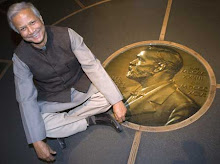At the nation’s rag capital, a group of priests, young professionals, and a top fashion designer collaborate on a social enterprise with a fashion statement [By Nia Terol]
If someone were to tell you that they had just come from Payatas wth an upscale fashion fund, you would likely think you had heard it all wrong. The word “Payatas,” after all, connotes images of destitute surroundings- a squalid area where impoverished families live atop mountains of garbage. It is hardly the environment you would expect for creativity and innovation, yet this is what Rags to Riches (R2R), a social development enterprise, found when it dug deeper into the Payatas situation.
Bro. Javy Alpasa, S.J., a Jesuit scholastic who ministers to the community around the Payatas dumpsite, relates that although he had seen clear evidence of pastoral growth among the Payatas folk, their economic circumstances had not been improving alongside with it. He then pondered the situation with a group of young professionals who wanted to do something to help.
Their assessment: Although Payatas had become well-known as the “rag capital of the Philippines,” the nanays [literally “mothers,” but here it means “women”] producing the rags were making only a measly P1 for each rag sold. In contrast, the retailers were making in huge profits of as much as P15 to P20 per rag.
They suggested this solution: eliminate the middlemen and add value to the merchandise so the nanays can make more money from their efforts.
With the donation of 2 students from Bro. Javy’s theology class at the Ateneo de Manila University, Rags 2 Riches was born.
The original idea of the young professionals was to create “designer rags” that could be sold to the market at a premium. They came up with so many ideas and took so many steps to make this happen, but to no avail. Eventually, however, through a series of serendipitous events, they ended up at the doorsteps of Rajo Laurel, one of Asia’s top fashion designers.
The end result of that meeting was an initial line of 11 well-designed accessory products made from rags- bags, totes, purses, and other personal items- under the “RIIR by Rajo” brand. They were to become an instant hit among the upscale, socially aware fashionista crowd.
Aside from Rajo Laurel, several other first-rate professionals volunteered their services to make the R2R product launch possible. Among them were Jake Versosa for photography, Krista Ranillo for endorsements, Maylin Vergara of the beauty salon, Propaganda for makeup and styling, popular events director Robbie Carmona, and the models from the Philippines’ Next Top Model search who graced the R2R launching event.
Part of R2R’s long-range plans is to also venture into men’s accessories and home accessories for both domestic and export markets.
Bro. Javy makes this observation abouy R2R’s social enterprise model: “It’s a win-win formula. The Payatas women earn more over time, certainly more than what they could make from time deposits or from putting up other enterprises. The adage ‘A high tide raises all boats’ rings true here.”
Indeed, the experience of R2R has shown that in social development, encouraging productive social partnerships between and across sectors is much better than espousing one-way philanthropy and charitable dole outs to the poor. This is because such productive social partnerships and to compete well with other businesses to survive and thrive.
SOURCE: ENTREPRENEUR magazine Philippines, March 2008 issue



This is a very interesting artic. :) I think I have watched a documentary about this "rags". It's nice to know that there are still a lot of people who are willing to help. :)
ReplyDeleteYes i agree! I believe people should give back to those unfortunate ones.
ReplyDelete